GM food is under attack… again. When hasn’t it been? Opponents claim GM is a health bomb with a fizzing fuse. Proponents hail it as a panacea for a world struggling with food. Neither side seems able to prove it.
That’s worrying, seeing as we ingest the stuff. And it’s surprising, considering GM food hit US supermarket shelves back in 1994, when a company called Calgene launched its Flavr Savr GM tomato into stores.
You’d think after 20 years of public debate, and even longer behind laboratory doors, we could expect indisputable evidence on the safety of something humans routinely use to build their bodies.
Yet disputed evidence sums up the GM debate. So any fact-finding mission means wading through a quagmire of claims and counter-claims about the GM scene, whether they relate to seeds, herbicides, pesticides, crops or animal feed. And they all cancel each other out.
For instance, last November, the Journal of Animal Science ran the most comprehensive study on GM animal feed ever attempted. It examined the diet and health of 100 billion animals over a 29-year period, covering the time before and after the animals started eating GM feed.
The results revealed “no disturbing trends in animal performance or health” or “any differences in the nutritional profile of animal products following consumption of genetically engineered feed”.
That’s a big green tick for GM. But four months later, in March 2015, the World Health Organization gave GM a big red cross. It said that glyphosate, the key ingredient in GM giant Monsanto’s bestselling herbicide Roundup, was “probably carcinogenic”.
That classification puts it second on its official cancer-causing scale, just behind number one, the emphatic ‘carcinogenic’.
The implication is huge. Roundup is the world’s most-used weedkiller, used by gardeners everywhere to keep their paths looking pretty and their geraniums free of pesky weeds. When it comes to food, Roundup is required for any farmer to grow Monsanto’s Roundup Ready GM seed, which is used for the vast majority of US crops (see pic, right). And in the UK, the Soil Association says the use of glyphosate on UK farms has increased by 400% in the past 20 years. It claims traces appear in one in three loaves of bread.
Conspiracy theory
How has GM evolved since its 1994 debut?
400%
increase in the use of “probable carcinogen” glyphosate on UK farms
1.2bn
acres of GM crops are now grown worldwide, in 80 varieties
28
countries now grow GM crops, led by the US
$15.9bn
Monsanto net sales in 2014
These two examples alone - a fraction of the voluminous selection of credible research available - deliver a familiar scientific impasse, where one team of respected scientists says there is nothing to worry about, while another says there most certainly is.
It’s a confusing situation exacerbated by the instinctive mistrust many people have of meddling with Mother Nature, a slew of ill-informed online GM conspiracy theory, and, perhaps worst of all, the kind of scientific research that exonerates the very industry that paid the scientists to conduct it.
There is plenty of this so-called ‘corporate science’ muddying the GM debate. For instance, that huge research project published in November was part-funded by Corn Flake king Kellogg’s. And some 80% of US corn is GM, according to the US Department of Agriculture.
It doesn’t mean the science is flawed. But at the very least it offers those looking to raise an eyebrow the perfect excuse. And for bloggers, it’s gold.
The sense of futility that hangs over the debate hasn’t stopped it getting louder. It’s currently going global thanks to the deadline for new legislation in the US and the EU drawing near. So as new arguments pour forth and research continues, can everyone, industry and consumer alike, hope for final proof that GM is safe? Or is the GM row doomed to continue ad infinitum until something terrible happens, à la DDT?
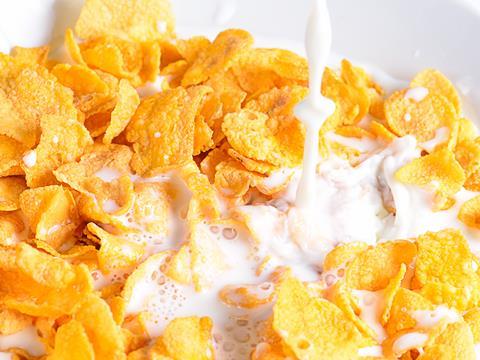
Pesticide
You remember DDT. The most infamous pesticide of all was discovered in 1873. It became popular after the Second World War, when a Swiss chemist called Paul Hermann Müller discovered that dichloro-diphenyl-trichloroethane was a highly efficient pesticide.
Usage rocketed. Müller won a Nobel Prize for his discovery in 1948. Monsanto became one of DDT’s biggest manufacturers. Some Americans recall walking through mists of the stuff on the streets as DDT was sprayed on trees. Grainy black and white photos and YouTube clips show it happening. And to understand the GM debate today, it’s vital to go back to that period when, in 1962, a book called Silent Spring asked some difficult questions.
Biologist Rachel Carson started writing it after becoming concerned about pesticides in the late 1940s.
She slowly gathered a body of evidence covering the negative impact of pesticides on wildlife (mainly birds, hence the title) and the environment at large.
The book made a huge impact. Her claims horrified the public, were rejected by the chemical industry and split the scientific community. It was a lively debate.
Time magazine called the book “unfair, one-sided, and hysterically overemphatic”.
David Attenborough considers it the “second most important scientific publication” since Darwin’s On the Origin of Species.
American Scientist nailed the debacle early. “The world has been treated to the most absorbing and instructive body of scientific and pseudoscientific literature it has ever known,” it wrote in 1964. “There has been defence and counter-defence, a focusing upon minutiae, distortion, innuendo, bias and claims of emotionalism, themselves written with extreme and apparent emotion.”
Vicious attack
Why has Monsanto got such a bad rap?
If you’re unfamiliar, a quick Google will explain why Monsanto abandoned its past. Its involvement in saccharin, PCBs, DDT, Agent Orange and the nuclear bomb makes its chemical copybook look like a Jackson Pollock. Little wonder it reorganised in 2002 to spin off its chemicals business and focus all its energies on agriculture. Its decision to keep its notorious name seems odd, but a spokesman insists it has “strong positive recognition in a number of markets, including North America. They value the brand.”
However, that link to the past may mean Monsanto will never truly be able to disassociate itself from the reasons it split itself apart in the first place. Still, it tries.
We are a “relatively new company” says its website. “While we share the name and history of a company that was founded in 1901, the Monsanto of today is focused on agriculture and supporting farmers around the world in their mission to produce more while conserving more.”
Monsanto’s critics would call that a generous description. In May, an organisation called MAM (March Against Monsanto) rallied thousands of activists in 400 cities across the world to register their disapproval. And since the WHO classified glyphosate as a probable carcinogen in March, two separate lawsuits, in LA and NYC, have been filed by a farmer and a horticultural assistant. Both claim Roundup gave them cancer, and that Monsanto is intentionally misleading when it advertises Roundup as safe. Should they succeed, a flood of lawsuits are predicted to follow. Legal websites report plaintiffs are being sought by law firms for class action lawsuits.
Monsanto has a GM market share of 23%, followed by DuPont, on 15%, and Syngenta, which recently rejected a merger with Monsanto, on 9%.
Seven years later, and six years after Carson died of cancer, the issue was still accelerating. Silent Spring whipped up a storm and is widely credited with sparking the eco-aware movement as we know it today.
The agricultural industry dug deep. Norman Borlaug, the Nobel Prize winning crop genius, didn’t hold back in a speech to the UN in 1971.
He attacked the “vicious, hysterical propaganda campaign against the use of agricultural chemicals” sparked by Silent Spring, describing it as a “half-science-half-fiction novel” that delivered a “diabolic, vitriolic bitter one-sided attack on the use of pesticides, especially insecticides and weed killers”. And DDT was the “main villain” in this “distorted, oversimplified book of biologic half-truths”.
It didn’t work. In 1972, 10 years after Silent Spring was published, DDT was banned in the US (it is still used elsewhere in the world, mainly for strictly monitored malaria control in Africa). The US Environmental Protection Agency said it was “convinced” that “continued massive use of DDT posed unacceptable risks to the environment and potential harm to human health”.
Forty-three years later, on 16 June 2015, epidemiologist Barbara Cohn appeared to confirm those fears when she linked DDT with cancer in women exposed to DDT when in utero. And on 23 June 2015, the WHO said DDT “probably” caused cancer.
DDT, a pesticide, is not the same thing as glyphosate, a herbicide. But, inevitably, the slow burn of DDT led to a general nervousness around spraying crops with chemicals. Just like glyphosate-based Roundup.
In September 2012, a peer-reviewed paper by Professor Gilles-Éric Séralini published in Food and Chemical Toxicology, an Elsevier journal, found rats that drank water laced with Roundup, or were fed Roundup Ready maize crops, suffered tumours and early death.
Two years in the making, the results delivered an all-out attack on Monsanto, and therefore the GM industry. The research was accompanied by lurid pictures of red-eyed albino lab rats suffering grotesque swollen tumours sprouting from every angle.
The news spread fast. The attacks came quick. In October, the European Food Safety Authority joined in when it branded the study “inadequate”.
In December 2013, the journal’s editor-in-chief, Wallace Hayes, said he had “legitimate cause for concern” about the research. He concluded by saying a “more in-depth look” at the data revealed “no definitive conclusions can be reached”. He retracted the piece.
Originally, he had asked Séralini to retract the study. Séralini refused. He was backed up by 182 scientists. A further 1217 scientists pledged to boycott Elsevier.
On 24 June 2014, the research was republished. It was attacked all over again. But in March 2015, the WHO gave Séralini’s study - and all scientific and public concerns over GM - the nod when it decreed that glyphosate is “probably carcinogenic”.
Asked last week if he stood by his research today, and felt validated by the WHO’s decision, Séralini simply replied: “Of course.”
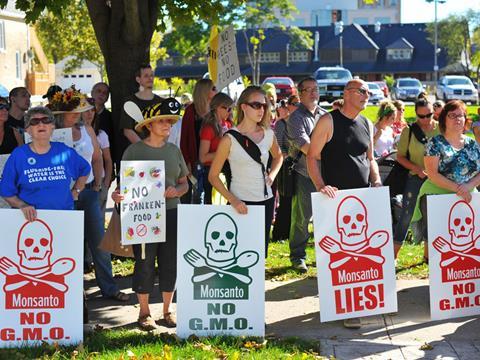
Lobbying
March was a busy month. Mike Pompeo, a Republican from Kansas, introduced a Bill to US Congress that would prevent individual states determining how GM food should be labelled. At the moment, no food product in the US has to mention it.
The ball started rolling 10 months earlier in May 2014, when the state of Vermont ruled that food products had to state if they used GM ingredients. The law is set to come into effect on 1 July 2016. Manufacturers that don’t comply face a $1,000 fine per day, per item.
Pompeo’s bill would reverse this law, and make GM labelling voluntary across the US from here on in.
It’s an important issue for consumers who would like to know if they are purchasing food made with GM ingredients.
It’s also potentially hazardous for food manufacturers. Those that use GM ingredients may, with some justification, worry GM labelling will put some consumers off their products. Then there is the threat of fines, and additional repackaging costs.
Lobbying on both sides is intense. The US Grocery Manufacturers Association says Pompeo’s proposal is a “common-sense bill” that offers a “uniform national standard” for labelling that “US consumers deserve”.
Vermont sees it differently. Attorney general William Sorrell told CNBC: “What’s happening in the House is really at the request of Monsanto and the grocery manufacturers. It would be most unfortunate if this powerful food industry has this much clout in the Congress.”
As arguments flew back and forth, Chipotle, the darling of fast-food foodies, removed GM ingredients from its restaurants. And gourmet grocer Whole Foods Market reminded everyone of its pledge to become the first national US chain to provide full GM transparency for every product it stocks by 2018.
On 23 July, the Bill was passed by 275 votes to 150 (“overwhelming”, says the GMA) and entered into the legislative process. If it emerges intact, President Obama has to sign it before it becomes law. He won’t be looking forward to tangling with the protestors.

British business
Currently, no GM crops are grown commercially in the UK. And there are very few food products with GM ingredients on UK supermarket shelves, mainly cooking oils and colourful US imports. All must be GM-labelled.
But GM has seeped into the UK food chain in widespread fashion thanks to GM animal feed. For instance, all the big four supermarkets sell poultry reared on GM feed because it’s no longer possible to guarantee that imported commodities like soya, often used for animal feed, are GM free.
This fact generated scandalised ‘Frankenfeed’ headlines in 2013, when Tesco first dropped its GM-free feed policy, closely followed by the rest of the supermarkets (other than Waitrose). But in 2014 the British Poultry Council claimed the news had had no impact on consumer confidence, with sales continuing to rise. A year later, in July 2015, it reported poultry sales were up 13% year on year, from £6.1bn to £6.9bn.
Meanwhile, after years of discussion, Europe made its big call. In March, it allowed GM crops into the EU. Diplomatically, it also allowed all 28 member states until 3 October to decide whether to allow GM seeds into their soil.
In the UK the decision is a devolved matter. Scotland, Wales and Northern Ireland opted out.
Scotland’s rural affairs secretary Richard Lochhead said Scotland had “longstanding concerns about GM crops - concerns that are shared by other European countries and consumers, and which should not be dismissed lightly.”
England stayed in. “GM crops are only approved once they have passed a robust, independent, safety assessment,” says a Defra spokeswoman. “We are supportive of the opportunities GM could bring for businesses, consumers and our environment and we want our farmers to have access to the best technology available so they can compete in the world market.”
At the UK Food and Drink Federation, Barbara Gallani, director of the regulatory, science and health division, offers GM a similarly wholehearted endorsement.
“It’s very clear that GM products are at least as safe as any other food that everyone eats every day”
Monsanto spokesman
“Our long-held position is that modern biotechnology, including GM, offers enormous potential to improve the quality and quantity of the food supply,” she says. “We support the government’s position that safe products should have fair market access, and that UK farmers should have access to a range of technologies, including GM.”
Overall, however, great swathes of Europe rejected GM, 19 countries in total, including heavyweights Germany, Italy, and France. So is this bad news for the GM industry?
Not really, says a Monsanto spokesman, who shrugs it off as a continuation of the “status quo”.
On a worldwide level then, does Monsanto think its reputation hinders the acceptance of GM food?
“It’s a factor,” he says. “We have made an effort to communicate beyond our customers and explain who we are these days, and what our business is. It is different to what it was historically, and it’s different to what people believe it to be.”
The biggest factor of all, though, is safety. Does Monsanto believe GM food is 100% safe?
“It’s very clear that GM products are at least as safe as any other food that everyone eats every day,” says the company’s spokesman. “So the challenge is public perception. And the passage of time will help that. Our position is the same as regulators around the world. There are farmers that love the technology and have been customers for 20 years. There are farmers that don’t. There is no unanimity in any group. But there is a well-established and very broad consensus among scientists that GM technology can be safely used to develop crops. Around the world, scientific committees charged with checking GM for safety - not promotion of the industry or the technology - overwhelmingly, and repeatedly, come back with findings of safety. The science is settled.”
But clearly, not all scientists agree, like Séralini, or those at the WHO. What does Monsanto think about the fallout from the Roundup rat research?
“We had much more than 20 years of studies confirming the safety of DDT”
Professor Glenn Davis Stone
“Scientifically it was retracted by the journal, which accepted it shouldn’t have published it because it wasn’t good science. Its claims have been reviewed and rejected as not meaningful. It provides no useful evidence about GM crop safety, although that doesn’t stop campaigners. It’s instructive that the so-called scientific paper was launched on the same day as a book and a film by Séralini. They are not pursuing a scientific process but a public communication process, which is in line with their campaign.”
Right now though, everyone is talking about GM at policy-making levels. So does Monsanto, which has always been right in the eye of the storm, feel the latest round of global discussion will help settle the safety debate once and for all?
“Look, there isn’t a food safety debate around GM foods. There are products that have been overwhelmingly successful in the market and are delivering huge benefits for farmers, the environment and consumers. Campaigns claiming products may not be safe are contradicted by regulatory findings around the world. It’s been over 20 years since the very first GM product, and the passage of time has added to public reassurance, over and above the technical and scientific assessments finding the products to be safe.”
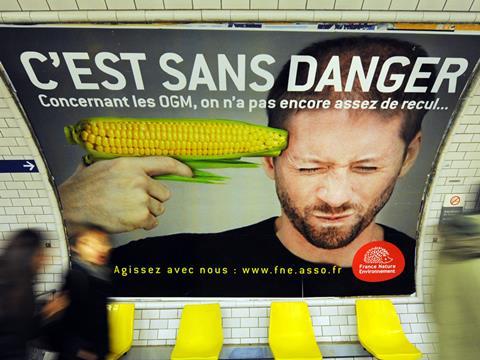
Feed the world
“I expect Monsanto to say that, and I certainly hope there are none so clueless and naive as to be persuaded of anything by their doing so,” says Glenn Davis Stone, professor of anthropology and environmental studies at Washington University in St Louis.
“Academic scientists who make these claims are more of a problem. They may have a vested interest in the technology, and they may lack expertise in epidemiology, but they are still scientists. And scientists are supposed to be professionals at dealing with different types of certainty and uncertainty. They should be aware of the many substances that have been around much longer than 20 years for which major questions remain.”
Stone uses the artificial sweetener saccharin as an example. It’s not a GM foodstuff per se, but it is a scientific substance consumed by humans that continues to perplex everyone. It’s been around since 1879. Monsanto built its empire by manufacturing it and selling it to Coca-Cola. It was labelled a carcinogen in 1977, removed from the carcinogen list in 2000, and today some claim it could be used to actually fight cancer.
“We discovered that 30% to 40% of the time a lot more foreign DNA than we expected got inserted into our tomatoes”
Belinda Martineau, genetic engineer
“Any scientist should find it obvious that after 136 years, we still have a lot to learn about the health impacts of saccharin,” says Stone. “We had much more than 20 years of studies confirming the safety of DDT. Now we know that, whereas it may never be found to have long-term health impacts on adults exposed to it, it has horrifying impacts on those exposed as children.”
It’s another persuasive argument. So what does one of its creators think?
“I was hoping genetically engineered foods would someday help feed the world,” says Belinda Martineau, a genetic engineer who helped develop the juicy red Flavr Savr tomato. “Although, in response to a question posed by an FDA scientist, we discovered that 30% to 40% of the time a lot more foreign DNA than we expected got inserted into our tomatoes. I began to wonder if the technology was ready for market.”
Ready or not, GM hit the market anyway. Yet Martineau claims the same issues remain today.
“The two primary techniques used to insert genes into plants and animals are highly mutagenic, causing insertional mutations 30% to 60% of the time. Extra foreign DNA can still be inserted when unintended, some crop and herbicide combinations cause super weeds or super bugs, and rat-feeding tests still indicate some GM crops may cause health problems.”
She believes each new GM product should be examined individually, something the National Academy of Sciences said in 1980, in one of the first GM crop reports.
And she adds long-term animal feeding studies are sensible because “we still just don’t know enough about what we might be disrupting in a plant’s genome”.
Clarity
If there is any clarity to the GM debate, it’s that GM is here to stay. And that animated discussion will continue while the world eats it for dinner, with both sides stuck at opposite ends of the table.
It wouldn’t be the first time a swivel-eyed conspiracy theorist has missed the mark, so it’s easy to ignore them. But it wouldn’t be the first time scientists have been wrong about the combination of chemicals and nature, either. And it’s harder to ignore that.
With that in mind, allowing consumers to decide for themselves seems reasonable (it’s been the case in the EU since 2004). Denying them the right to choose in the US, as President Obama may yet do, doesn’t.
Worse, it reinforces fears the GM industry has something to hide. And so the whole merry-go-round begins all over again.
What’s happening with animal cloning?
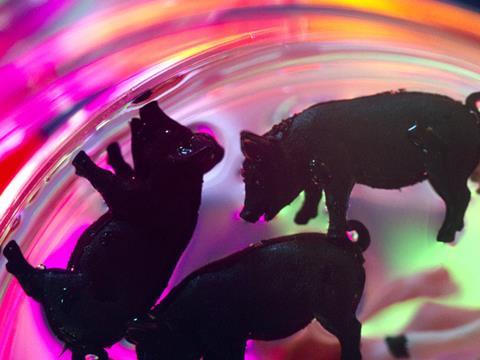
It all began with a sheep called Dolly. In 1996, she became the first mammal to be cloned from a cell taken from an adult sheep.
Since Dolly, sheep, cats, rabbits, horses, donkeys, pigs, goats and cattle have been successfully cloned. By 2010, Compassion in World Farming said there were about 6,000 clones on farms worldwide.
Last year, the BBC reported that China was producing cloned pigs on an “industrial scale” with one company, BGI, producing an “astonishing” 500 pigs a year (and last week, BGI announced a new sideline, micropigs guaranteed to stay small, yours for $1,600).
The US Food and Drug Administration also considers meat and other products from cloned animals to be every bit as safe as other animals.
The European Union is not so sure. It’s concerned about the poor health of cloned animals (many die in the first few weeks). It’s also got the jitters about the prospect of cloned meat arriving on European supermarket shelves.
On 24 September, it banned cloning of farm animals by a comprehensive majority of 529 votes to 120. The “comprehensive” ban covers the sale or import of clones, their offspring and any products made from cloned animals (including meat, milk or animal feed).
“We need to take into account the impact on animal health, but also on human health,” said agriculture committee co-rapporteur Giulia Moi.
“This reports sends the message to our trade partners that we are not willing to put our own health, our families’ health, and future generations’ health at stake using products of dubious quality of this nature,” she added.
“We want to be sure that we don’t go down a path from which there is no return.”







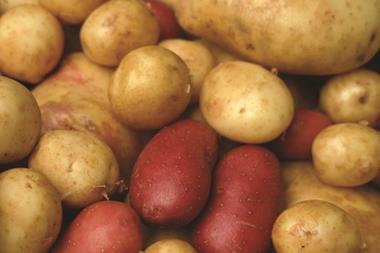

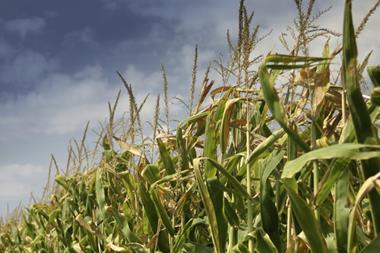









No comments yet